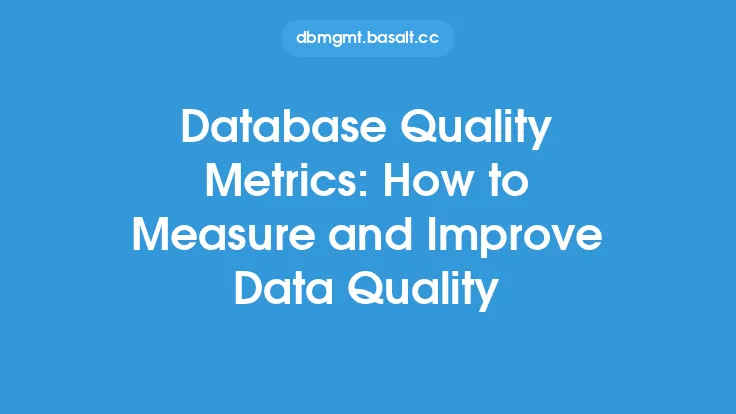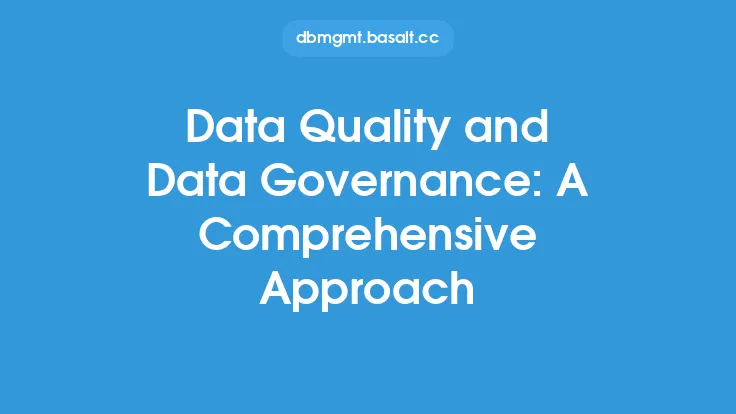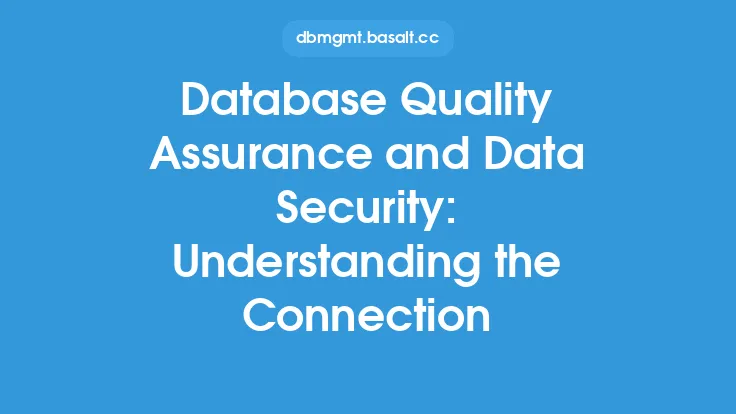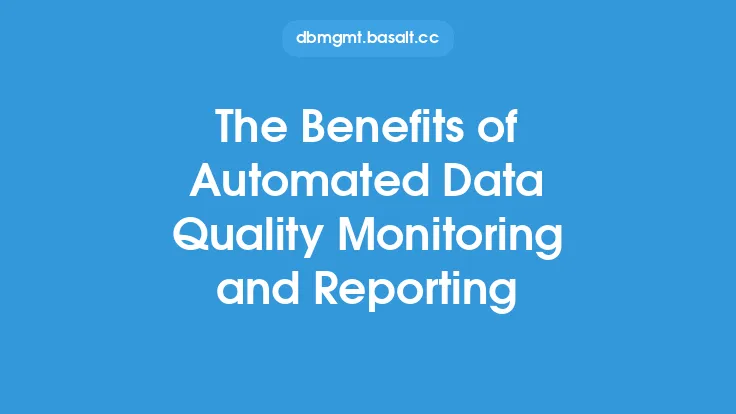Data quality issues are a pervasive problem in the world of data management, and can have far-reaching consequences for businesses, organizations, and individuals. At its core, data quality refers to the accuracy, completeness, and consistency of data, as well as its relevance and reliability. When data quality issues arise, they can lead to incorrect insights, poor decision-making, and a lack of trust in the data. In this article, we will delve into the common problems that can affect data quality, and explore the solutions that can help to mitigate these issues.
Introduction to Data Quality Issues
Data quality issues can arise from a variety of sources, including human error, technical glitches, and systemic problems. Some common causes of data quality issues include data entry errors, incomplete or missing data, duplicate or redundant data, and inconsistent data formatting. Additionally, data quality issues can also arise from the integration of data from multiple sources, which can lead to inconsistencies and discrepancies. To address these issues, it is essential to have a comprehensive understanding of the types of data quality issues that can occur, and the solutions that can be implemented to prevent or resolve them.
Types of Data Quality Issues
There are several types of data quality issues that can occur, including accuracy issues, completeness issues, consistency issues, and relevance issues. Accuracy issues refer to errors or inaccuracies in the data, such as incorrect values or formatting. Completeness issues refer to missing or incomplete data, which can make it difficult to draw accurate conclusions or make informed decisions. Consistency issues refer to inconsistencies in the data, such as different formatting or terminology used across different datasets. Relevance issues refer to data that is not relevant or useful for the intended purpose, which can lead to wasted resources and poor decision-making.
Causes of Data Quality Issues
Data quality issues can arise from a variety of causes, including human error, technical glitches, and systemic problems. Human error can occur during data entry, data processing, or data analysis, and can lead to errors or inaccuracies in the data. Technical glitches can occur due to software or hardware failures, which can lead to data corruption or loss. Systemic problems can occur due to inadequate data management practices, such as a lack of data validation or data normalization. Additionally, data quality issues can also arise from the integration of data from multiple sources, which can lead to inconsistencies and discrepancies.
Solutions to Data Quality Issues
To address data quality issues, it is essential to implement solutions that can help to prevent or resolve these issues. Some common solutions include data validation, data normalization, data cleansing, and data transformation. Data validation refers to the process of checking data for errors or inaccuracies, and can be performed using a variety of techniques, such as data profiling or data quality metrics. Data normalization refers to the process of transforming data into a consistent format, which can help to improve data quality and reduce errors. Data cleansing refers to the process of removing errors or inaccuracies from the data, which can help to improve data quality and reduce errors. Data transformation refers to the process of converting data from one format to another, which can help to improve data quality and reduce errors.
Data Quality Tools and Technologies
There are a variety of tools and technologies that can be used to address data quality issues, including data quality software, data profiling tools, and data governance platforms. Data quality software can be used to perform data validation, data normalization, and data cleansing, and can help to improve data quality and reduce errors. Data profiling tools can be used to analyze data and identify errors or inaccuracies, and can help to improve data quality and reduce errors. Data governance platforms can be used to manage and govern data, and can help to improve data quality and reduce errors.
Best Practices for Data Quality
To ensure high-quality data, it is essential to follow best practices for data quality, including data validation, data normalization, and data cleansing. Additionally, it is essential to implement data governance practices, such as data stewardship and data quality metrics, to ensure that data is accurate, complete, and consistent. It is also essential to provide training and education to data users, to ensure that they understand the importance of data quality and how to maintain it. By following these best practices, organizations can help to ensure high-quality data, and reduce the risk of data quality issues.
Conclusion
Data quality issues are a pervasive problem in the world of data management, and can have far-reaching consequences for businesses, organizations, and individuals. By understanding the common problems that can affect data quality, and implementing solutions to prevent or resolve these issues, organizations can help to ensure high-quality data, and reduce the risk of data quality issues. Additionally, by following best practices for data quality, and implementing data governance practices, organizations can help to ensure that data is accurate, complete, and consistent, and that it is used effectively to inform decision-making.





